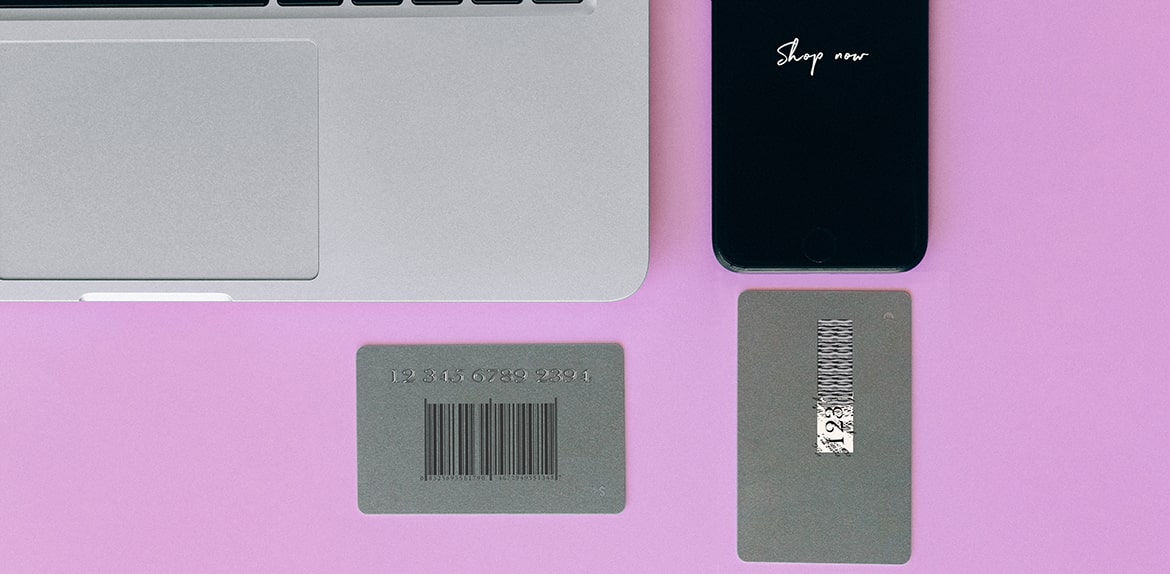Personalization
Personalization is one of the most important stages in the production of plastic cards, which is carried out during the post-printing processing of products on special equipment and is a technological process that gives individual properties to plastic blanks. Each individually taken personalization technology guarantees a fairly high degree of protection, but most often a complex of several methods is used to prevent card counterfeiting and protect them from unauthorized access.
Among the many ways to personalize plastic cards, there are those that can be changed if necessary (information stored on a microchip or magnetic stripe) and those that cannot be changed.
Also, personalization technologies that are widely used today can be roughly divided into two types: the results of which can be seen, or visual, and electrical.
The visual types of personalization of plastic cards include the following:
Embossing is the application of raised characters of alphanumeric text to the surface of a plastic card by means of extrusion. Possible only with horizontal orientation of the card.
There are two types of fonts for embossing:
- 4.5 mm high – large (Farrington OCR);
- 3 mm high – small (Standard Gothic and Cyrillic).
Large font can only contain numbers: 0123456789
Small print – numbers and capital letters of the Russian, Ukrainian and English alphabets, including symbols:. , ‘- / &
Maximum number of characters per line when used:
- 4.5 mm font – 20 characters ~ 75 mm, including spaces;
- font 3mm – 30 characters ~ 75 mm, including spaces.
According to the ISO 7811-3 standard, the embossing must be at least 5 mm from any edge of the card. In developing the design of the card layout, one should take into account the location of such elements as the magnetic stripe and the signature panel and pay attention to the visualization of the embossed symbols on both sides of the card. Topping – coloring the relief of embossed symbols using a special ink ribbon (foil).
The reverse process to embossing is indent printing, that is, the application of embossed symbols on the surface of the card with their simultaneous coloring through a special ink ribbon (indent tape).
Scratch coverage – used to hide information on the map for a while. In addition to the fact that the information printed under the scratch-strip (there can be both letters and numbers) cannot be changed, the protective coating itself cannot be restored after erasure, and the information under it is not damaged.
Personalization of the card by applying a signature strip is widespread in the financial and insurance industry. The cardholder puts his signature on it and, if necessary, duplicates it when performing transactions for identification.
Alphanumeric method – applying a text or serial number to the surface of the card using a printed method or laser engraving.
Microtext – is used as an additional degree of protection for a plastic card, and represents alphabetic and numerical information distinguishable only with multiple magnification.
Barcode – can be applied by methods: ink jet or laser engraving, under a laminate, on a thermal sublimation printer. Contains encrypted alphabetic and numeric information. Usually printed on white, less often on a colored background (such a background prevents illegal copying).
The cards use the following barcode formats: EAN-13, EAN-8, CODE-128, CODE-39, as well as QR-code.
It is necessary to comply with the technical requirements for the layout of cards with a barcode: the height of the code is from 10 mm, and the distance between the barcode and the border of the card is from 3 mm
Photographic image – a photograph of the owner of a plastic card, applied using digital, or sublimation / retransfer printing and assumes on the surface of the card full-color or monochrome images (numbers, barcodes, text, microtext, logos, photographs) by the penetration of dyes from the ink ribbon into the plastic under exposure to temperature.
Ultraviolet image – applied to increase the protection of a plastic card against illegal copying. Such an image is visible only under UV illumination; in daylight, drawings and inscriptions are not visible.
Electrical (electronic) personalization of plastic cards is used to encode information, with the entry into the memory of a chip or on a magnetic stripe, using specialized equipment.
Chip is a microprocessor-based data carrier embedded in the card. For a plastic card, both a contact and a contactless chip (RIFD-tag) can be used.
Magnetic stripe is a magnetic storage medium for recording data. Personalization by applying and coding a magnetic stripe is the recording of individual information on magnetic strips. Has 3 tracks for recording: one for alphanumeric information and two tracks for numbers located on the card itself. Discount cards, gift cards and access control systems use one or two tracks. All three recording tracks are used in bank cards.
Reading / writing of information on a magnetic track is performed using readers.
Methods of personalization of cards are usually used in combination, which allows accounting for plastic cards, reducing the likelihood of fraud with their use.
If you still have questions about personalization, please contact our specialists to solve your problem!
